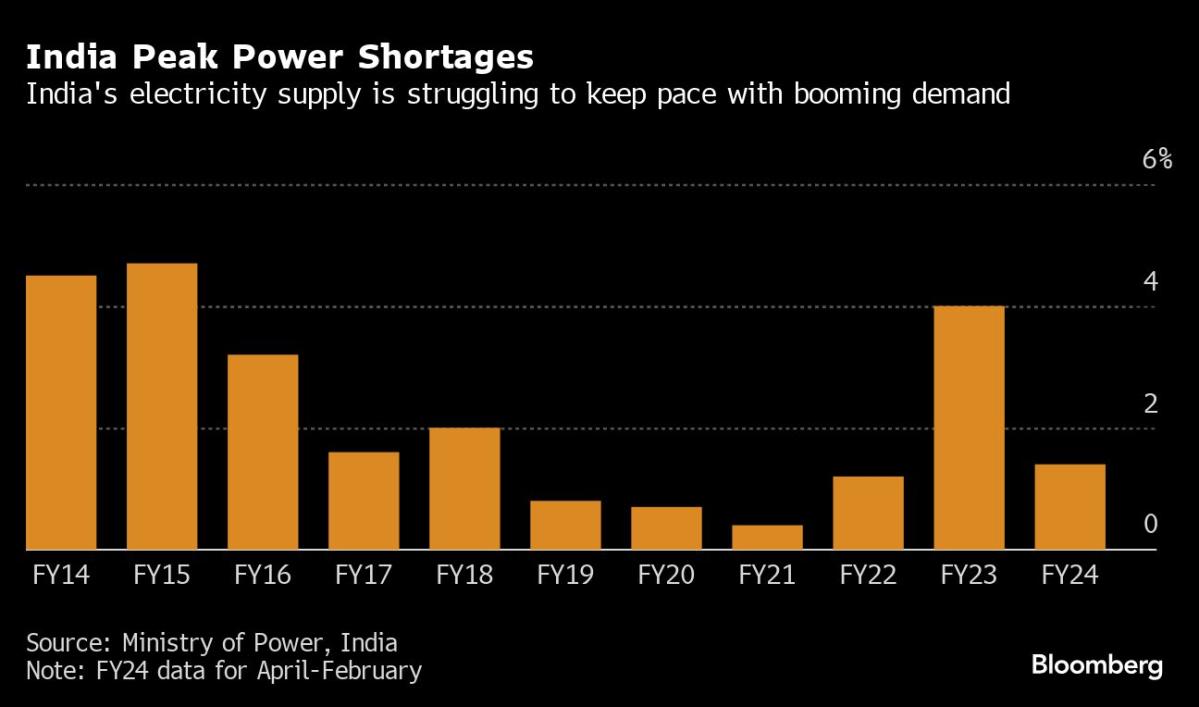

(Bloomberg) — India forecast hotter-than-usual temperatures over the coming months, raising the risk of water shortages, crop damages and higher coal use to avoid power blackouts in the planet’s most populous nation.
Most Read from Bloomberg
Heat waves are expected for 10 to 20 days in different areas during the three-month period ending June 30, against a normal of four to eight days, Mrutyunjay Mohapatra, director general of the India Meteorological Department, said at a briefing in New Delhi on Monday. Above-normal maximum temperatures are likely over most parts of the country, he said.
The prediction comes at a time when the world’s biggest democracy is preparing to hold general elections between mid-April and early June — a period when the mercury often crosses 45C (113F). There could be a greater threat to human lives as heat strokes, which kill dozens of people every year in the South Asian nation, could hit participants at political rallies.
Climate change is making India vulnerable to extreme weather events, with the country of 1.4 billion people facing increased occurrences of floods, cyclones, droughts and heat waves. The scorching sun will not only reduce the availability of drinking water but also drain moisture from soils, a potential threat for some summer crops such as pulses and oilseeds. The city of Bengaluru, home to the $194 billion IT services industry, is already struggling with water shortages.
However, the impact on winter-sown wheat crops is likely to be limited as the plants have matured and harvesting has started in many states. A bumper output, as the government predicts, could prompt authorities to ease exports restrictions that have been in place since 2022.
The weather outlook will put more pressure on energy companies. The peak electricity demand, which is estimated to surge to a record 250 gigawatts this summer, may rise further if heat waves prolong. The power ministry has asked plants to continue importing coal to make up for any shortfall in local supplies.
Reserves of coal, which accounts for about three-fourths of electricity generation, at power plants have jumped 38% over the past year and can last for 18 days on average, power ministry data show. Still, inventories are below the mandated levels.
Most Read from Bloomberg Businessweek
©2024 Bloomberg L.P.
EMEA Tribune is not involved in this news article, it is taken from our partners and or from the News Agencies. Copyright and Credit go to the News Agencies, email [email protected] Follow our WhatsApp verified Channel









